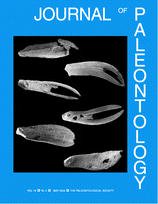Halkieriids are part of a distinctive Early Cambrian fauna, the “Tommotian fauna” sensu Sepkoski (1992), that is preserved mostly as phosphatic and secondarily phosphatized skeletal elements. The distinctiveness of the Tommotian fauna is ascribed, in part, to its preferential elimination during the end-Early Cambrian mass extinction event (the “Botomian extinction”). Newly discovered halkieriids in phosphatic limestones of the Middle Cambrian (Ptychagnostus gibbus Zone) Monastery Creek Formation, Georgina Basin, Australia, now indicate that this group not only survived the end-Early Cambrian extinction, but was at least locally abundant thereafter. Most of the Georgina halkieriid sclerites can be accommodated within a single species, Australohalkieria superstes new genus and species, described and partly reconstructed here. Remaining sclerites probably represent two additional but rare halkieriid species. Additional newly discovered sclerites may have affinities with the sachitids, another problematic “Tommotian” taxon related to the halkieriids. Rare wiwaxiid sclerites extend the taphonomic and geographic distribution of this clade. The Monastery Creek Formation provides a valuable window on Middle Cambrian life, both because it provides information that is distinct from but complementary to other, similarly aged windows (e.g., the Burgess Shale) and because it represents a taphonomic window similar to those that preserve Early Cambrian small shelly problematica. A decline during the Cambrian in conditions necessary for the early diagenetic phosphatization of shallow-shelf and platform limestones may have effectively closed this taphonomic window, potentially biasing apparent patterns of diversity change through the period.
How to translate text using browser tools
1 May 2004
HALKIERIIDS IN MIDDLE CAMBRIAN PHOSPHATIC LIMESTONES FROM AUSTRALIA
SUSANNAH M. PORTER
ACCESS THE FULL ARTICLE

Journal of Paleontology
Vol. 78 • No. 3
May 2004
Vol. 78 • No. 3
May 2004




